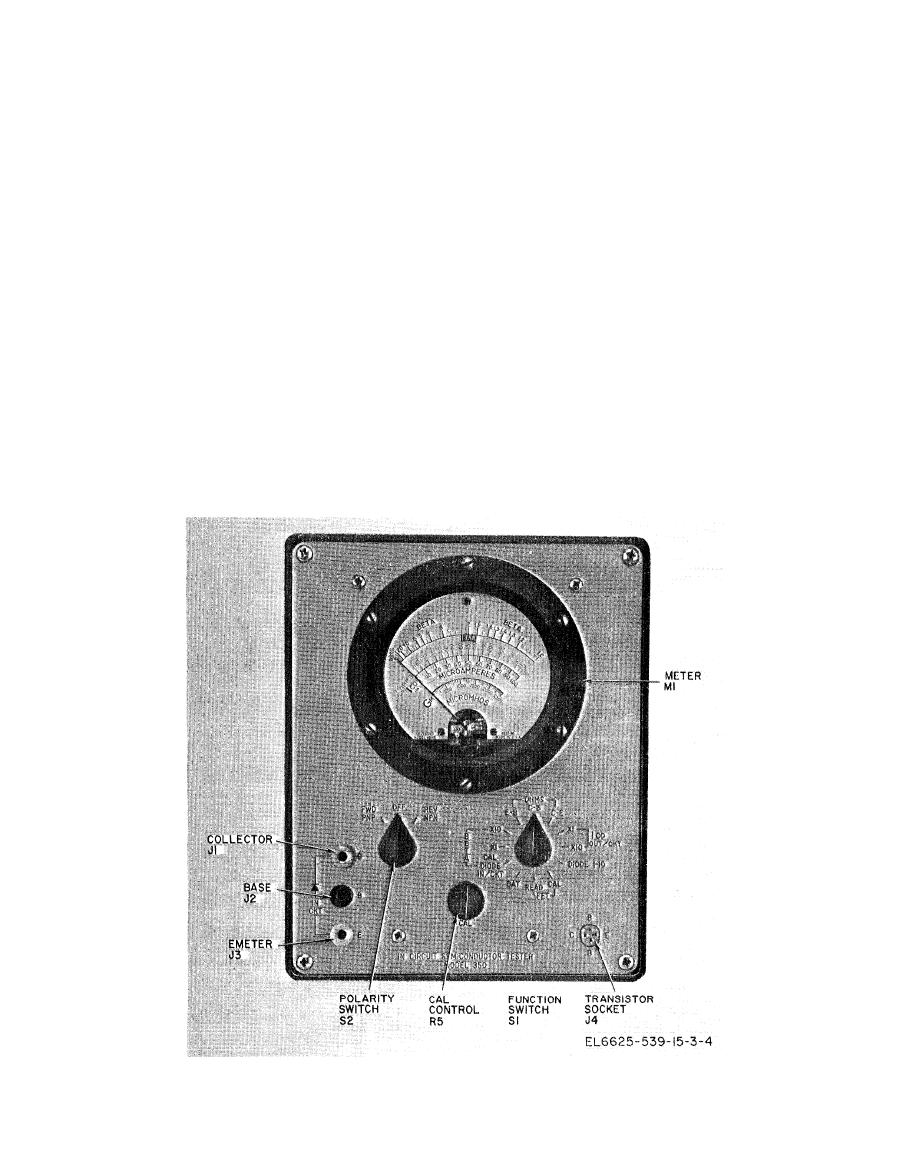
TM 11-6625-539-14-3
falls in the high portion of the BETA scale, ad-
on the high portion of the BETA scale, advance
vance the function switch to the BETA X10 range
the function switch to the BETA X10 range and
and multiply the BETA reading by 10.
multiply the reading by 10,
d. Circuit Resistance Measurement (Out-of-
c. Beta Measurement (In-Circuit).
Circuit).
(1) Insert the three test leads supplied with
(1) connect the leads to the transistor un-
the instrument. into the three color-coded jacks
der test, as described in b(1) above for out-of-
on the front panel; be careful to insert the red
circuit measurement.
probe into the red jack, the black probe into the
(2) Place the polarity switch to correspond
black jack, and the yellow probe into the yellow
to the type of semiconductor device being tested,
jack. Connect the other ends of the test leads to
(3) Set the function switch to OHMS E-B.
the transistor under test. Be careful to connect
(4) Read the resistance of the emitter-to-
the red-coded alligator clip to the collector, the
base circuitry directly on the center (OHMS)
black-coded alligator clip to the base, and the
scale.
yellow-coiled alligator clip to the emitter,
(5) Set the function switch to OHMS C-B.
(2) Set the polarity switch to correspond
(6) Read the resistance of the collector-to-
to the type of device being tested.
base circuitry directly on the center (OHMS)
(3) Set the function switch to BETA CAL,
scale,
anl adjust. the CAL control for full-scale meter
(7) Set the function switch to OHMS C-E.
deflection,
(8) Read the resistance of the collector-to-
( 4 ) Advance the function switch to the
emitter circuitry directly on the center (OHMS)
BETA X1 range, and read the BETA directly on
scale.
the top (BETA) scale of the meter, If the BETA
Figure 3-1. Test Set, Transistor TS-1836C/U, controls and indicators.
3-2

